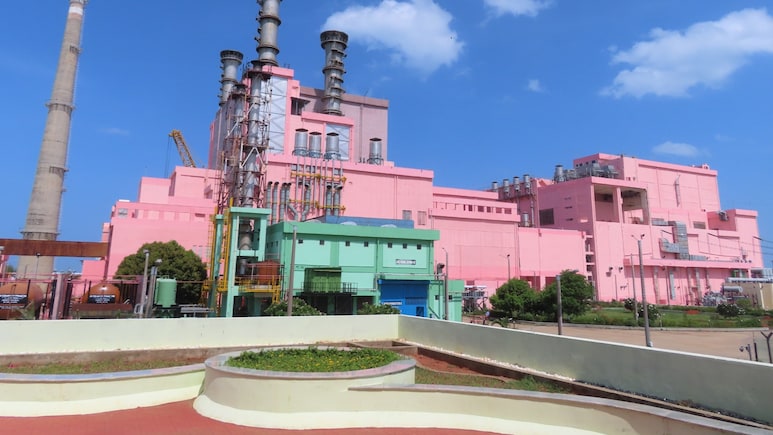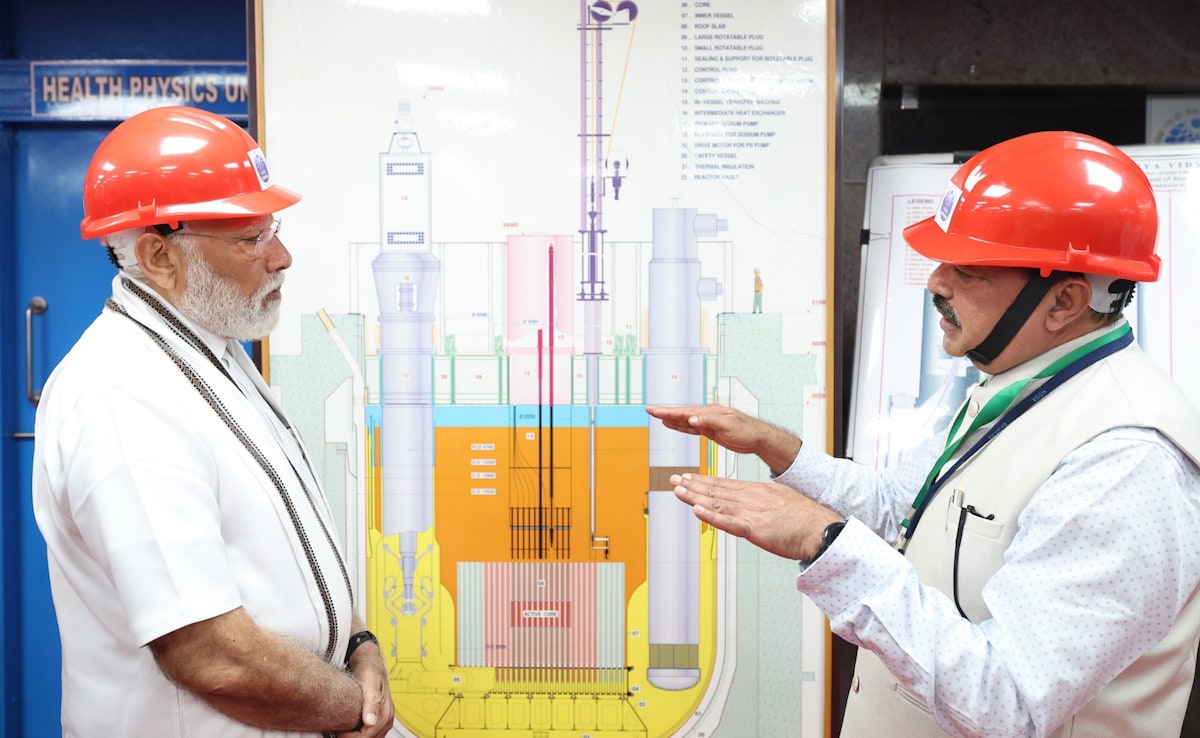
India's atomic energy program is poised to enter a transformative phase as its most advanced and complex nuclear reactor - the Prototype Fast Breeder Reactor (PFBR) - nears operational readiness. Located at Kalpakkam in Tamil Nadu. The PFBR is finally approaching fuel loading after years of delays and technical hurdles.
This week, the Indian nuclear regulator is expected to give the formal nod to begin loading nuclear fuel into the reactor core, a critical step that will mark the beginning of India's second stage in its three-phase nuclear energy program.
Speaking exclusively to NDTV, Dr Ajit Kumar Mohanty, Chairman of the Atomic Energy Commission, confirmed, "There was a mechanical problem with the fuel transfer arm and that has been resolved. Now the PFBR awaits a formal nod from India's nuclear regulator to begin the all-important step of fuel loading."
The PFBR is a 500 MW liquid sodium-cooled reactor designed to use plutonium as fuel and eventually transition to thorium, a resource in which India holds one of the world's largest reserves. Unlike uranium, which is limited in India, thorium offers the promise of long-term energy independence. Experts believe that if India can successfully harness thorium, it could unlock an energy source that lasts for centuries, often referred to as the 'Akshay Patra' of atomic energy.
Dinesh Kumar Shukla, Chairman of the Atomic Energy Regulatory Board, asserts the safety of the reactor, stating, "PFBR is an inherently safe reactor."
Fast breeder reactors are unique in their ability to produce more fuel than they consume. The term "fast" refers to the use of high-energy fast neutrons in the fission process. India already operates a smaller Fast Breeder Test Reactor (FBTR) at Kalpakkam, which has been running successfully for over four decades. According to Dr Mohanty, "The FBTR built by Indira Gandhi Centre for Atomic Research (IGCAR) has completed 34 irradiation campaigns at the target power of 40 MWt. The demonstration facility for recycling of Fast Reactor Spent Fuel was also successfully operated."
In January 2025, the Government of India launched the Nuclear Energy Mission for Viksit Bharat, aiming to scale up nuclear power capacity to 100 GW by 2047. Fast breeder reactors like the PFBR are central to this vision, offering low-carbon electricity in a sustainable and scalable manner.
The PFBR project was approved in 2003 with the creation of Bhartiya Nabhikiya Vidyut Nigam Ltd (BHAVINI), tasked with constructing and operating the reactor. Despite being a twenty-year-old design, the PFBR remains a technological marvel. Dr Mohanty candidly noted, "PFBR is a very complex machine and trying to master it is not easy. As we move one step forward, we encounter setbacks and have to retreat two steps backwards."
The PFBR uses Uranium-Plutonium Mixed Oxide (MOX) fuel. Surrounding the core is a "blanket" of Uranium-238, which undergoes nuclear transmutation to produce more fuel-hence the term "breeder." In future stages, Thorium-232 will be used as a blanket material to produce Uranium-233, a fissile material that will power India's third-stage reactors.
Prime Minister Narendra Modi personally inspected the PFBR on March 4, 2024, witnessing the core loading process. The Department of Atomic Energy (DAE) describes the PFBR as a third-generation reactor with passive safety features, capable of prompt and safe shutdown during emergencies.

PM Narendra Modi inspected the Prototype Fast Breeder Reactor (PFBR) in 2024.
Photo Credit: DAE
The PFBR also addresses the challenge of nuclear waste. By using spent fuel from the first stage of India's nuclear program, it significantly reduces the volume of waste and the need for large-scale geological disposal.
Despite its advanced technology, the PFBR's capital cost and per-unit electricity cost remain comparable to conventional power plants. Initially approved at Rs 5,677 crore, the project has seen cost overruns, with current estimates at Rs 6,840 crore.
In line with the Aatmanirbhar Bharat initiative, the PFBR has been fully designed and constructed indigenously by BHAVINI, with contributions from over 200 Indian industries, including MSMEs. Once commissioned, India will become only the second country after Russia to operate a commercial fast breeder reactor.
The PFBR is not just a technological achievement - it is a strategic leap toward energy security and sustainable development. As India prepares to load fuel into its most advanced reactor, the world watches a nation mastering nuclear complexity with indigenous innovation.
Two more fast breeder reactors are planned at Kalpakkam once the PFBR proves its operational reliability.
India's nuclear journey, marked by perseverance and innovation, is now entering a new chapter-one powered by plutonium, guided by thorium, and driven by the dream of energy independence.
Track Latest News Live on NDTV.com and get news updates from India and around the world

